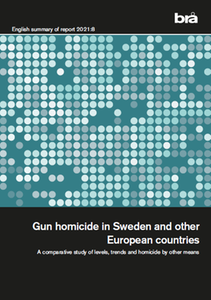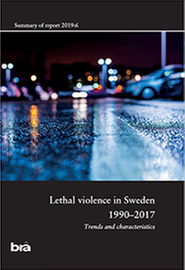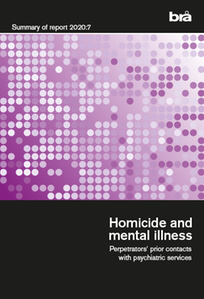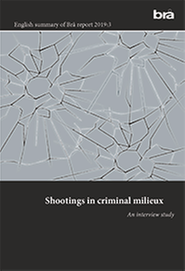- Start
- / Home
- / Crime and statistics
- / Murder and manslaughter
Murder and manslaughter
Murder, manslaughter, and assault with a lethal outcome are usually jointly designated lethal violence. In 2023, 121 cases of lethal violence were confirmed in Sweden. The average of lethal violence for the last ten years (2014-2023) is 111 cases per year.
Lethal violence
Confirmed cases of lethal violence, in total and by sex¹ for the years, 2002 – 2023
(Reported cases of lethal violence where lethal violence is highly likely to be the cause of death). Source: Confirmed cases of lethal violence (Brå)
1.) The victim's sex is reported for the confirmed cases of lethal violence since 2011. In one of the cases in 2012, the victim's sex could not be established.
In 2023, 121 cases of lethal violence were confirmed in Sweden. This can be seen from the statistic regarding confirmed cases of lethal violence. This is an increase by 5 cases, as compared with 2022.
Since 2002, when Brå started producing the statistics, the level of confirmed cases of lethal violence has fluctuated between 68 and 124 cases. Up until 2012, the development of the number of cases was marked by an overall downward trend with relatively large variations from year to year. From 2013 onwards, the number of cases has been at a higher level than in previous years, which has broken the downward trend.
Sex
In 2023, the victim was a female in 33 cases (27 per cent) and a male in 88 cases (73 per cent). Compared to 2022, the number of female victims increased with 10 cases in 2023, while the number of male victims decreased by 5 cases.
In relation to the population, the number of confirmed cases of lethal violence was 1.15 cases per 100,000 inhabitants in 2023, a slightly higher level than in 2022 (1.11). The number of female victims per 100,000 female inhabitants was higher in 2023 (0.63) compared with 2022 (0.44), while the number of male victims per 100,000 male inhabitants was lower in 2023 (1.66) compared with 2022 (1.76).
Against someone in close relationship (partner or ex-partner)
In 10 cases of the confirmed cases of lethal violence in 2023, victims and perpetrators were related by a close relationship (partner or ex-partner), which accounted for 8 per cent of all cases of lethal violence. In 2022, the corresponding number was also 10 cases (9 per cent).
The number of cases of lethal violence against women in a close relationship in 2023 amounted to 10 cases, which equals to 30 per cent of all cases of lethal violence with female victims during the year. The corresponding number for male victims in a close relationship in 2023 was zero cases.
Use of firearms
In 2023, firearms were used in 53 of the observed cases of lethal violence, 10 less than in 2022, which corresponded to 45 percent of all observed cases of lethal violence in 2023. Meanwhile, the number of cases of lethal violence without using firearms increased with 15 cases, from 53 cases in 2022 to 68 cases in 2023.
In the cases where a firearm was used 2023, the victim was a male in 87 per cent of the cases (46 cases), and in 7 cases the victim was a female (13 per cent). The sex ratio for male victims in the cases where a firearm was used has been pending between 85 to 98 per cent, with an average of 93 per cent during the period 2014-2023.
Regional breakdown
The majority (72 cases, corresponded to 60 per cent) of the confirmed cases of lethal violence in 2023 were reported in one of the major metropolitan police regions of Stockholm, Väst and Syd. This level has fluctuated between 60 and 75 per cent during the years 2014-2023.
The figures above come from Brå's special study of lethal violence which only includes reported cases of lethal violence where lethal violence is highly likely to be the cause of death. This is because the statistic regarding reported offences is misleading where lethal violence is concerned, since it shows all reported incidents with a lethal outcome where there initially was reason to investigate whether lethal violence may have been used. Following investigation, many of these incidents are seen to involve something other than lethal violence, for example suicide, accident, or natural death. It also occurs that several police reports are prepared for a single case of suspected lethal violence, which means that the statistic contains repeats. Moreover, attempts, preparation, and conspiracy to commit murder or manslaughter are erroneously registered as completed murder or manslaughter.






